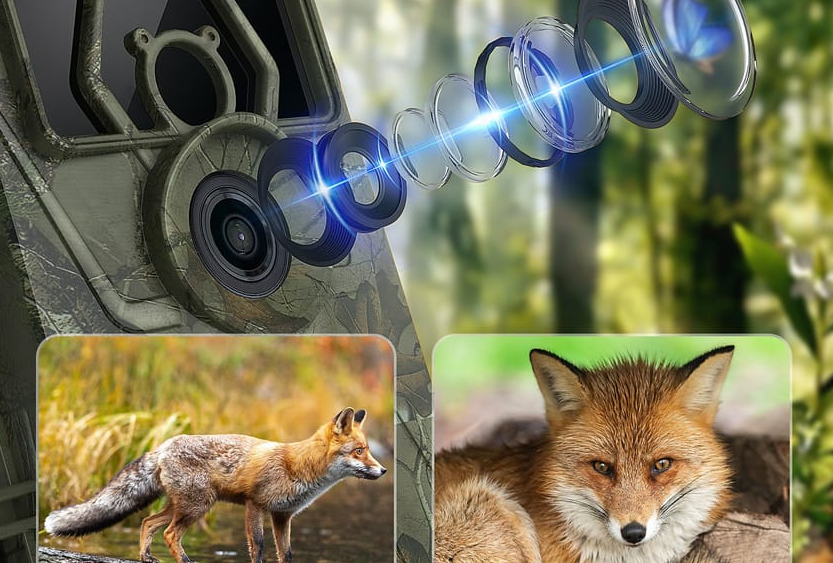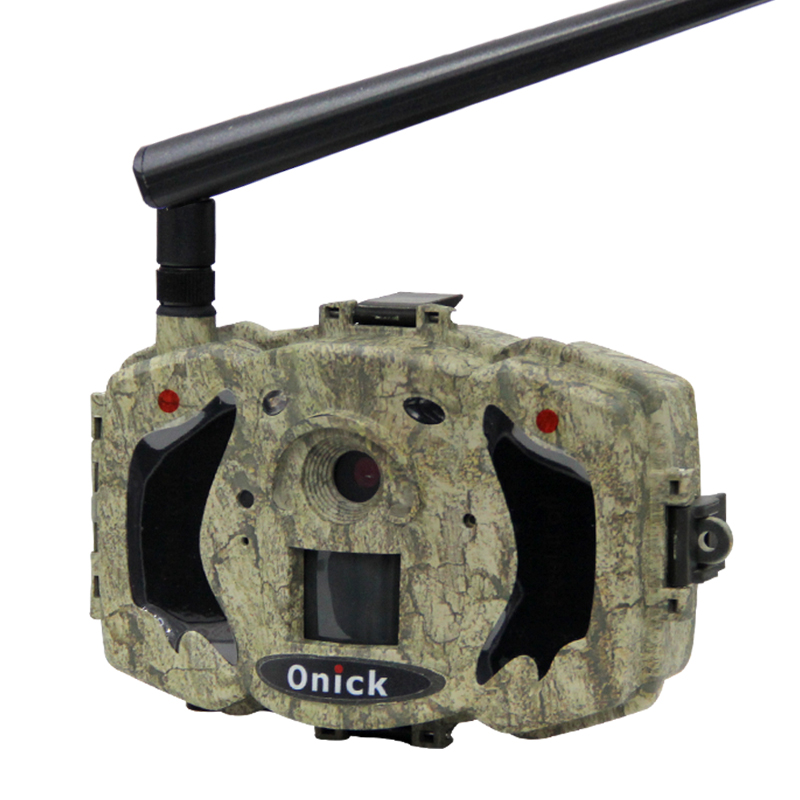Infrared night vision trigger cameras are commonly used in wildlife monitoring, security surveillance, and other fields. They can automatically capture photos or videos at night or in low-light environments.
The following is a detailed description:
Working Principle
Active: Consists of an infrared transmitter, receiver, and camera. The transmitter emits an infrared beam invisible to the human eye. When a moving object passes between the transmitter and receiver, the infrared beam is interrupted, triggering the camera to record.
Passive: Mainly composed of an infrared sensor, a control circuit board, a camera, a power supply system, and a housing. When a warm-blooded animal passes in front of the device, the temperature difference between the animal's body temperature and the ambient temperature causes a change in the heat around the camera. The infrared sensor receives this heat change and generates a pulse signal, triggering the camera to record.

Onick AM-36 wildlife infrared monitoring camera with MMS supports up to 36 million pixels high-definition photography and 1920x1080 high-definition video shooting. The instrument starts up quickly and responds quickly, with clear images and true colors. Flash-free design, no flash when shooting at night, not easy to be exposed. Users can number and name cameras. It can be equipped with the cloud platform image processing system independently developed by our company (software registration number: 2022SR0370995) to identify and analyze the captured pictures and videos. It can also be used with the mobile phone APP to remotely control the camera (software registration number: 2022SR0370994). Modify parameters via remote control and see live images remotely in real time.
1. Pictures are 36 million high-definition pixels, videos are 1920x1080
2. PIR sensing distance 30 meters
3. Support 4G image transmission function
4. Super long standby time of 8 months
Features
Infrared Night Vision: Equipped with infrared light, such as an 850nm or 940nm wavelength infrared LED, it can illuminate in complete darkness, enabling nighttime recording. Some cameras have an infrared night vision range of approximately 20-35 meters. High-resolution imaging: These cameras typically have higher pixel counts, enabling clear photos and videos. For example, the Onick AM-36 can capture up to 36 megapixels, and some cameras also support 4K video.
Fast triggering: These cameras offer fast triggering speeds, typically completing the capture process within 0.2-0.6 seconds. This ensures that when an animal or object enters the detection range, the camera initiates the capture immediately, preventing you from missing crucial moments.
Wide detection angle: These cameras typically have a detection angle of approximately 90°-120°, covering a larger area and increasing the probability of capturing the target.

Data storage and transmission: These cameras support large-capacity memory cards, such as SD cards and TF cards, with capacities up to 512GB or higher. Some cameras also offer wireless transmission capabilities, such as 4G and WiFi, allowing for real-time transfer of captured photos and videos to a mobile phone or cloud platform. Durable Design: Featuring waterproof, dustproof, and drop-resistant features, such as IP66 and IP67 ratings, it can withstand harsh natural environments. It also boasts long battery life and can be powered by dry cells, rechargeable batteries, or solar panels, meeting the demands of extended fieldwork.
Applications
Wildlife Monitoring: Used in nature reserves and research institutions to monitor and study wildlife species, populations, and activity patterns.
Security Monitoring: Suitable for use in orchards, construction sites, warehouses, homes, and other locations to prevent theft and intrusion.
Ecological Photography: Provides a way for wildlife photography enthusiasts to capture stunning wildlife moments without human intervention.
Other Applications: Can also be used for traffic monitoring, automatic visibility monitoring by meteorological bureaus, and evidence collection by public security, procuratorial, and judicial authorities.


